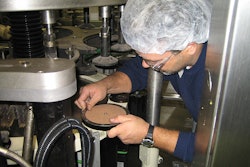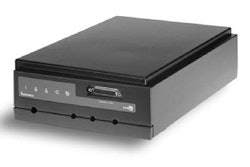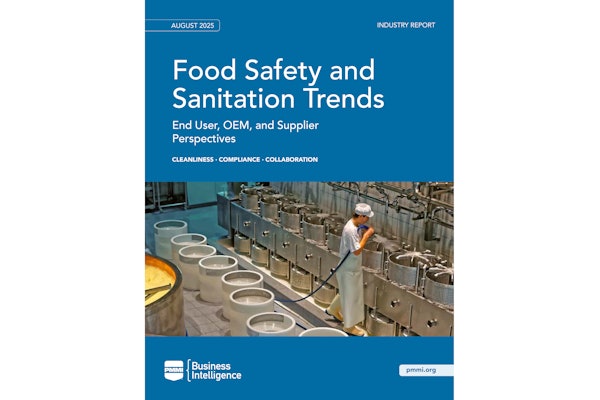
If RFID succeeds at the case level, then what can we expect? A lot of data will be flying around; perhaps as many as five to 10 distinct RFID reads over the life of each case that has been tagged. Besides the information technology bandwidth, data storage, data aggregation, and processing issues, does this really matter?
If RFID is successful, all this data means that the management of the information about the shipments and the effectiveness of promotions have kicked in. Retailers and savvy packagers have learned how to drive more revenue/sales by being more effective in their promotional efforts and being more capable of shifting the flow of goods to the most successful stores.
Yes, I said packaging operations not distribution centers. The holy grails of “just in time manufacturing” and “minimal inventory in distribution centers” will rear their heads again. This time, we might just be able to pull it off.
When the data and analysis tools are in place to utilize the tracking information from all those RFID tags, the gradual trend we have all seen to smaller more frequent orders will have accelerated rapidly.
When retailers see that they have better visibility of the goods in their inbound supply chain and they have better visibility of sales performance, they will be more inclined to shift their orders down in size; truck loads to pallets, pallets of single stockkeeping units (SKUs) to mixed SKU pallets, and pallet-sized orders to case-sized orders. This allows a more precise stream of goods to meet consumer demand. This means ensuring higher sales by reducing stock outs where consumers are buying, and reducing overstocks where they are not. Retailers will also look at the destinations of the shipments from their suppliers. With the added visibility and control provided by RFID, retailers can manage more shipments that bypass their own distribution centers and go directly to their stores. Thus they get the supply chain responsiveness they need with the added control they have at a lower cost than their business experiences today.
Not a pretty picture for packagers
This is not a pretty picture for most packagers to contemplate. Once again, all the savings go to the retailers and all the costs go to the packagers. The question is can you change your packaging and distribution operations to smaller production runs, lower inventory quantities, and radically altered distribution operations? What is the manufacturing impact of shorter production runs?
The most common effects are higher changeover costs because of more frequent changeovers and less production time because of more downtime to execute the changeovers. Changing your manufacturing and packaging operations may involve significant re-engineering and capital investment. Not something you can do quickly. The alternative is to suffer added costs for inventory; continue the production runs of today, stockpile the difference between demand and inventory and expect that it balances out over time. Neither approach is attractive.
The change in distribution operations may be equally disruptive. A warehouse tuned to picking and shipping single SKU pallets in truckload quantities is not the same warehouse that picks cases, builds mixed SKU pallets, and ships in less than truckload (LTL) quantities. What if the retailer wants the cases to be smaller, e.g. 30 count instead of 100 count? Now everything must change.
The good news
The good news part of this scenario is that there is time to plan and execute the business changes. The bad news is that an inexpensive solution is not obvious. You might think that a third-party logistic (3PL) provider would be the solution. The packager continues their production and distribution operations as they do today. Instead of shipping to the retailer's DC, they ship to the 3PL. It is the 3PL that is tuned to converting single SKU pallets in into mixed SKU pallets out and full truck loads in into LTL shipments out. Great! The means to meet the change in demand already exists. The method may solve the compliance problem, but it adds cost, costs which most packagers cannot afford. 3PLs and packagers need to form their own consortium where the 3PL receives goods from packagers with the same or overlapping customer base.
The 3PL reassembles the goods from several packagers that were received at the 3PL as a series of LTL shipments into full truckloads direct to stores with multiple SKUs from multiple packagers (doesn't this look just like the pallets shipped from the retailer’s DC to their store?).
RFID reads can be challenging for single-SKU pallets, but what about good RFID reads for mixed loads? One solution is that the 3PL can disassemble full pallets to a sortation line and read the tags as they construct the mixed SKU pallets—just as Wal-Mart does in its own DCs.
This has been tried with limited success. It has usually been pushed by a forward thinking 3PL and resisted by defensive minded packagers; “I don’t want my product on the same truck with their product.” The big packagers may be able to do this on their own with their own resources or through a dedicated 3PL. The mid-tier packagers should look to this “consortium concept” as a means to challenge the big players and win against them (at least to get to cost parity) rather than as a means to win against other mid-tier competitors. Better plan now or be further behind later.
























